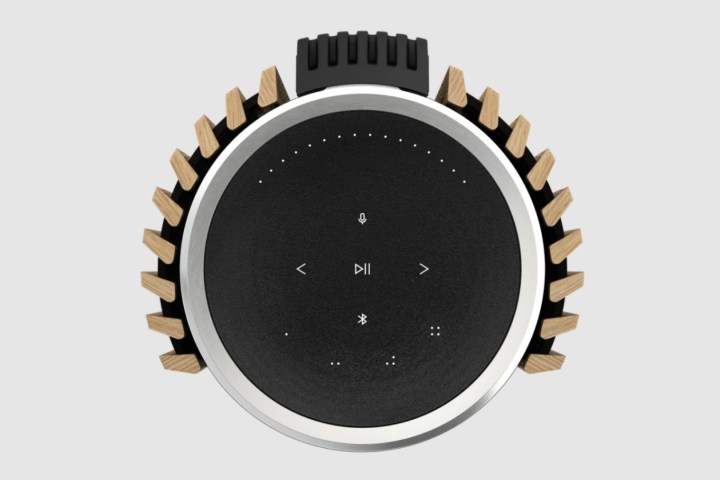Bang & Olufsen (B&O), the storied Danish audio brand, has a long history of designing products that put an equal emphasis on form and function, a philosophy that often results in gorgeous but very expensive gear. The company’s latest speakers are a perfect example: The Beolab 28 are tower-style wireless speakers that can be floor-standing or wall-mounted, and they start at $14,750 per pair for the fabric editions. You can also buy wood trim versions that will run you $16,500 or more depending on the wood you choose.
Decorators and homeowners get tons of possible combinations: Natural silver, black anthracite, or bronze tone aluminum for the Beolab 28’s body, two tones of fabric (gray and gray melange), and four choices of wood covers — light oak, oak, smoked oak, and walnut.
When floor standing, they measure 53 inches tall and weigh 41 pounds each.

Inside the speakers, B&O has packed three 3-inch full-range drivers (one mounted forward and one on each side), a 1-inch tweeter, and a 6.5-inch woofer that sits in the speaker’s conical base. Each of these drivers is powered by its own discrete class-D amplifier, for a total peak power of 625 watts per speaker.
But the feature that is likely to garner the most attention — beyond the eye-catching design of the speakers themselves — is the motorized “curtains” that run almost the full length of the Beolab 28’s slender, cylindrical body.
These curtains (made from fabric or wood, depending on your choice of materials) open automatically when the speakers are turned on and close again when they’re off. But they’re not just for bragging rights: The curtains also play a role in the Beolab 28’s Beam Width Control feature, which can modify how sound is directed around the room.
In “narrow mode,” sound is highly directional. B&O claims that this minimizes the interference of side wall reflections and helps to achieve a sweet spot when listening. In “wide mode,” the speakers open up, diffusing the sound in a more general pattern that should create optimal listening without needing to stay in one spot.
The top panel houses the speaker’s touch controls, which illuminate when they sense someone is nearby.
To help owners tune the speakers to their space, the Beolab 28 come with Bang & Olufsen’s latest-generation Active Room Compensation, which adapts the bass response to the room. You’ll be prompted to tune the speakers when you first set them up, but you can do it again at any time if you relocate them.
The Beolab 28 are primarily meant as wireless speakers. You can connect over Bluetooth or Apple AirPlay, and Chromecast is available too if you add the speakers to the Google Home app. This also enables smart speaker functionality with Google Assistant, thanks to the built-in microphones.

As with the company’s recently released Beosound Level and Beosound Emerge, the Beolab 28 feature an upgradeable connectivity module that can be swapped out if standards change over time.
Music control can be done through one of these wireless protocols using streaming apps on your smartphone, or you can hop into the B&O app and control your music or add the speakers to a multiroom setup (available in the fall via a firmware update).
The speakers sync with one another over B&O’s Wireless Power Link 24-bit/48kHz protocol, but they are also compatible with the WiSA wireless standard for delay-free, 24-bit/48kHz streaming from WiSA transmitters (see our full WiSA explainer for the details).

For those who want a wired connection, there are two options. A hybrid analog/optical input on the back of the speakers lets you connect virtually any audio source, while an RJ45 jack lets you connect to older B&O systems via the wired Power Link cabling system. Finally, each speaker has a dual set of 10/100 Mbit Ethernet ports for wired network connectivity.
Not many people are going to be able to afford the Beolab 28, but for those who can, they look like an amazing addition to any room.
It’s been a busy year so far for B&O. It has already launched an update to its line of wireless headphones, including a model aimed at gamers, a slender portable speaker, and an equally slender bookshelf speaker.





